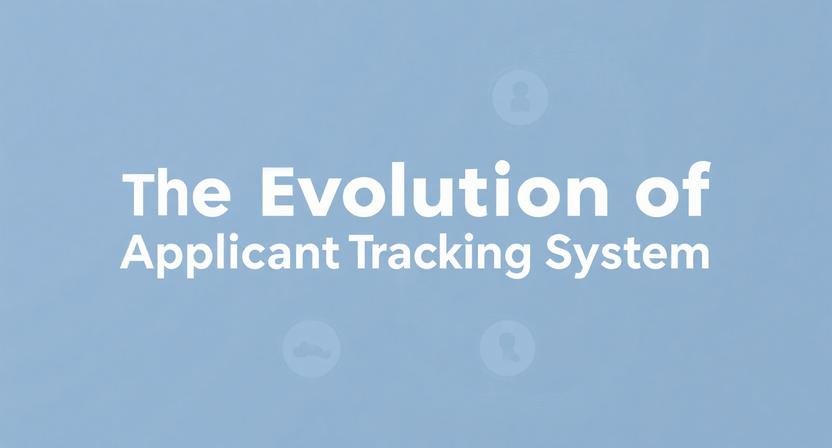The recruitment industry has undergone a dramatic transformation over the last five decades. At the heart of this evolution lies a cornerstone technology — the applicant tracking system (ATS) — which has revolutionized how recruiters find, manage, and hire candidates. From its humble beginnings as a manual paper-based process to today’s AI-powered applicant tracking software for recruiters, understanding the history of ATS sheds light on how recruitment has adapted to the challenges posed by changing technology, candidate behavior, and business needs.
This article provides a detailed historical account of the evolution of applicant tracking systems for recruiters, highlights major milestones, and explains why selecting the best applicant tracking systems for recruiters today means leveraging advanced, data-driven, and user-centric platforms.
The Early Days: Manual Recruitment and the Birth of ATS
Before the advent of computerized recruitment tools, hiring was a cumbersome manual process. Recruiters relied on physical resumes, paper files, and classified ads in newspapers to source candidates. Managing even a few dozen applicants demanded large filing cabinets and significant administrative overhead. This approach was slow, inefficient, and prone to errors.
The earliest forms of applicant tracking systems emerged in the 1970s and 1980s, primarily as basic digital databases to index and retrieve candidate information. Early ATS enabled recruiters to digitally log resumes and sort candidates using simple filters like job titles or keywords, providing the first glimpse into automated recruitment management.
The 1990s: A Digital Revolution
The 1990s brought a technological leap with the popularization of computers and the internet. Applicant tracking systems became more sophisticated, evolving into databases capable of storing large candidate volumes. Recruiters started using ATS to electronically post jobs and receive applications via email.
During this period, ATS platforms introduced keyword-based resume screening to automate initial candidate filtering, drastically reducing the time needed to sift through applications. However, these early systems had limited integration capabilities and required significant training to operate.
The 2000s: The Internet and Job Boards Boom
The early 2000s marked a turning point as job boards like Monster.com and later LinkedIn reshaped talent sourcing. ATS platforms integrated with these job boards to capture a growing influx of online applications. Automated resume parsing became mainstream, improving the efficiency of candidate data capture by extracting key information from varied resume formats.
Additionally, applicant tracking systems began to support email automation for candidate communication and more sophisticated workflow management. This enhanced recruiters’ ability to collaborate with hiring teams, schedule interviews, and track applicants at various hiring stages.
The 2010s: Cloud Computing and Candidate Experience
With cloud technology’s rise, ATS transitioned from on-premise installations to cloud-based, software-as-a-service (SaaS) platforms. This shift improved accessibility, security, and scalability for recruiters, especially SMBs. Cloud-based applicant tracking software for recruiters enabled real-time updates, mobile access, and seamless collaboration across dispersed teams.
During this decade, improving candidate experience became a priority. Modern ATS began to offer mobile-optimized application portals, status updates, and transparent communication features, lowering candidate drop-off rates and strengthening employer branding.
Today and Beyond: AI, Analytics, and Data-Driven Hiring
Today’s applicant tracking systems for recruiters are intelligent platforms harnessing artificial intelligence and machine learning to transform recruitment into a strategic function. ATS now provide predictive analytics, automated candidate scoring, and bias reduction tools to ensure quality and fairness.
Data-driven hiring enabled by ATS analytics dashboards supports continuous improvement in recruitment strategy, candidate sourcing, and diversity hiring. Integration with broader human resource and workforce management systems makes ATS central to end-to-end talent management.
Choosing the Best Applicant Tracking Systems for Recruiters Today
Modern recruiters choosing an ATS should look for:
-
Robust resume parsing and AI candidate matching
-
Advanced analytics and recruitment funnel visualization
-
Seamless integration with job boards, HRIS, and payroll systems
-
Mobile-friendly candidate and recruiter interfaces
-
Customizable workflows to suit specific recruitment processes
-
Strong security and compliance features
Read More: Applicant Tracking System Benefits: Why Recruiters Need ATS in 2025
High-Authority Resource
For an authoritative overview and detailed insights on the evolution and capabilities of applicant tracking systems, SAP’s in-depth article is highly recommended: What is an Applicant Tracking System (ATS)? – SAP.
The evolution of applicant tracking systems reflects the broader digital transformation of recruitment. From manual filing cabinets to AI-powered platforms, ATS have evolved to meet growing complexity and scale, empowering recruiters to hire smarter and faster in today’s competitive talent market.

